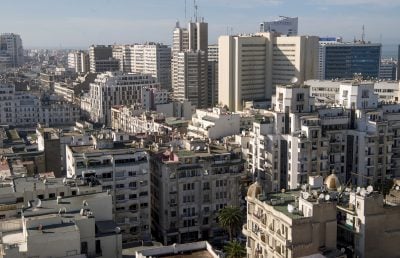Zambia is set to launch a sovereign wealth fund in 2025 as the Southern African country seeks to shield itself from future shocks after several years of economic volatility.
The Industrial Development Corporation (IDC), a state-owned enterprise which invests across industries with the aim of strengthening Zambia’s industrial base and creating jobs, released a statement that said they would be establishing the sovereign wealth fund next year.
It said that the primary goal of the fund is to support the public finances in times of financial distress, as well as to make long-term investments in strategic sectors such as health, education, farming, energy, and infrastructure.
The IDC said, “the wealth fund will allow us to invest the surplus revenues from our natural resources and other sources, ensuring financial stability.”
Dividends from IDC’s existing portfolio companies will provide further cash. However, most of the capital for the sovereign wealth fund will come from mining revenues. The Zambian authorities believe that streamlining minerals licencing could be worth up to $1bn, capital which will then be injected into the new sovereign wealth fund.
Zambia is Africa’s second biggest exporter of copper, which accounts for more than $6bn of its annual revenue. In 2021, the mining sector contributed 17.5% to Zambia’s GDP and over 70% of its foreign exchange earnings.
While copper prices have largely been on the rise – increasing by almost 80% over the past five years given its pivotal role in renewable energy infrastructure and electric vehicles – Zambia has nonetheless experienced a difficult period economically, something which has perhaps underscored the need to diversify the country’s revenues and establish a more innovative approach to the nation’s finances.
Indeed, amid the economic turbulence of the Covid-19 pandemic, Zambia missed a $42.5m Eurobond payment and stopped making payments on around $17bn of external debt. This was partly because of the sharp depreciation in the price of copper at the start of the pandemic – highlighting Zambia’s exposure to even short-lived weakness in commodity prices – as well as the collapse in international tourism that had contributed over 7% to Zambia’s GDP the year before the pandemic.
Both of these factors sharply dented government revenue and also significantly reduced the amount of hard foreign currency Zambia received, pushing it into default.
The new sovereign wealth fund is being established to try and avoid this situation occurring again by offering the government a more diverse array of revenue streams and making it less dependent on global commodity prices.
Want to continue reading? Subscribe today.
You've read all your free articles for this month! Subscribe now to enjoy full access to our content.
Digital Monthly
£8.00 / month
Receive full unlimited access to our articles, opinions, podcasts and more.
Digital Yearly
£70.00 / year
Our best value offer - save £26 and gain access to all of our digital content for an entire year!

 Sign in with Google
Sign in with Google 



